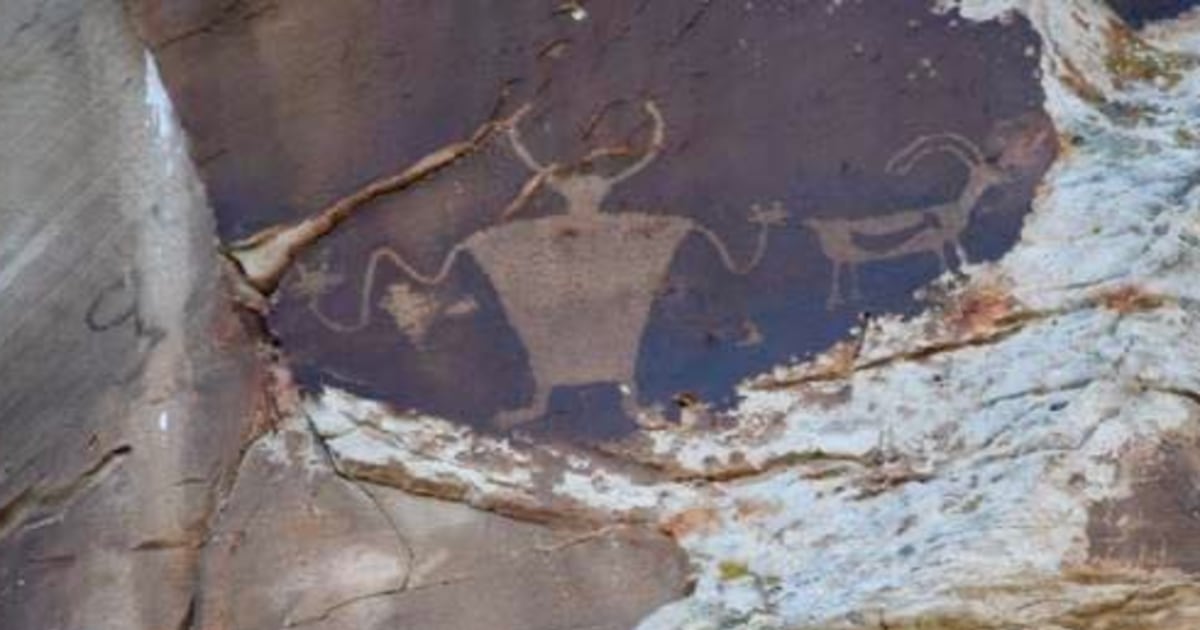Utah authorities seek those responsible for damaging panel of ancient outdoor engravings
Authorities this week said they want to find anyone involved in the installation of climbing bolts at the site of an ancient outdoor engraving in northeastern Utah.
Climbing bolts, also known as anchors, were discovered at the site of the Pregnant Sheep Petroglyph Panel on federal land in the northeastern corner of the state on Nov. 10, the Uintah County Sheriff’s Office said.
On Thursday, the sheriff’s office and the U.S. Bureau of Land Management asked for the public’s help in tracking down anyone involved in the installation of bolts near Highway 40’s Musket Shot Springs Overlook, which is about 11 miles from Dinosaur National Monument in neighboring Colorado.
In a statement on Facebook, the bureau characterized the act as vandalism.
The sheriff’s office characterized the installation as having taken place on the petroglyph panel. Sheriff’s officials did not immediately respond to a request for more information.
Information on the specific panel was not immediately available.
Elements associated with similar engravings in Wayne County, Utah, in the southern third of the state, have been radiocarbon dated by Colorado State University geomorphologist Joel Pederson to 1100 A.D., according to the Natural History Museum of Utah.
Collaborator Steven Simms, a Utah State University anthropologist, is quoted by the museum as stating some of the state’s petroglyphs represent “persistence, reformulation, and integration of art, iconography, and ideology among peoples.”
Autumn Gillard, the cultural resource manager for the Paiute Indian Tribe of Utah, told NBC affiliate KSL of Salt Lake City that installing bolts at the site of a petroglyph is “disrespectful” to the state’s indigenous people because the engravings are sacred to many.
“For us, as tribal people, these are our churches,” she told the station earlier this month. “When folks go in and they vandalize panels, or they vandalize cultural sites, we correlate it to the same thing as if somebody was to go into a temple or a religious space and were to write graffiti all over it or to write their name all over it.”
The search for the bolts’ installer is taking place as climbing advocacy group Access Fund celebrated a December victory for legislation called Protecting America’s Rock Climbing, passed by Congress as part of the Expanding Public Lands Outdoor Recreation Experiences Act.
The bill, in part, “clarifies that climbing and the placement, use, and maintenance of fixed anchors (including bolts, pins, and slings) are appropriate, and not prohibited, within wilderness areas,” the nonprofit group said in a statement on Dec. 19.
The Access Fund said the National Park Service this month backed off a proposal that would have prohibited fixed anchors on federal land.
On Dec. 2, Utah’s Kane County Sheriff’s Office said two people wanted for questioning in the alleged defacing of a petroglyph near Wire Pass, known for its photogenic rock formations, were located and contacted.
Bureau of Land Management district manager Harry Barber told KSL a woman was arrested and could face multiple felony counts connected to the incident. Barber said in a video update posted to Facebook that the woman allegedly wrote her name “and/or other things” on the petroglyph.
It wasn’t clear if the woman has a lawyer, and the status of the case was not available. The federal public defender’s office for Utah did not immediately respond to a request for comment Saturday night.
In Uintah County, roughly 500 miles northeast of Wire Pass, sheriff’s officials indicated any leads that develop in their search for the bolt installer would be forwarded to federal agents.
“BLM law enforcement is asking the public to report any information they may have identifying the person(s) responsible for this incident,” the sheriff’s office there said in its Thursday statement.


